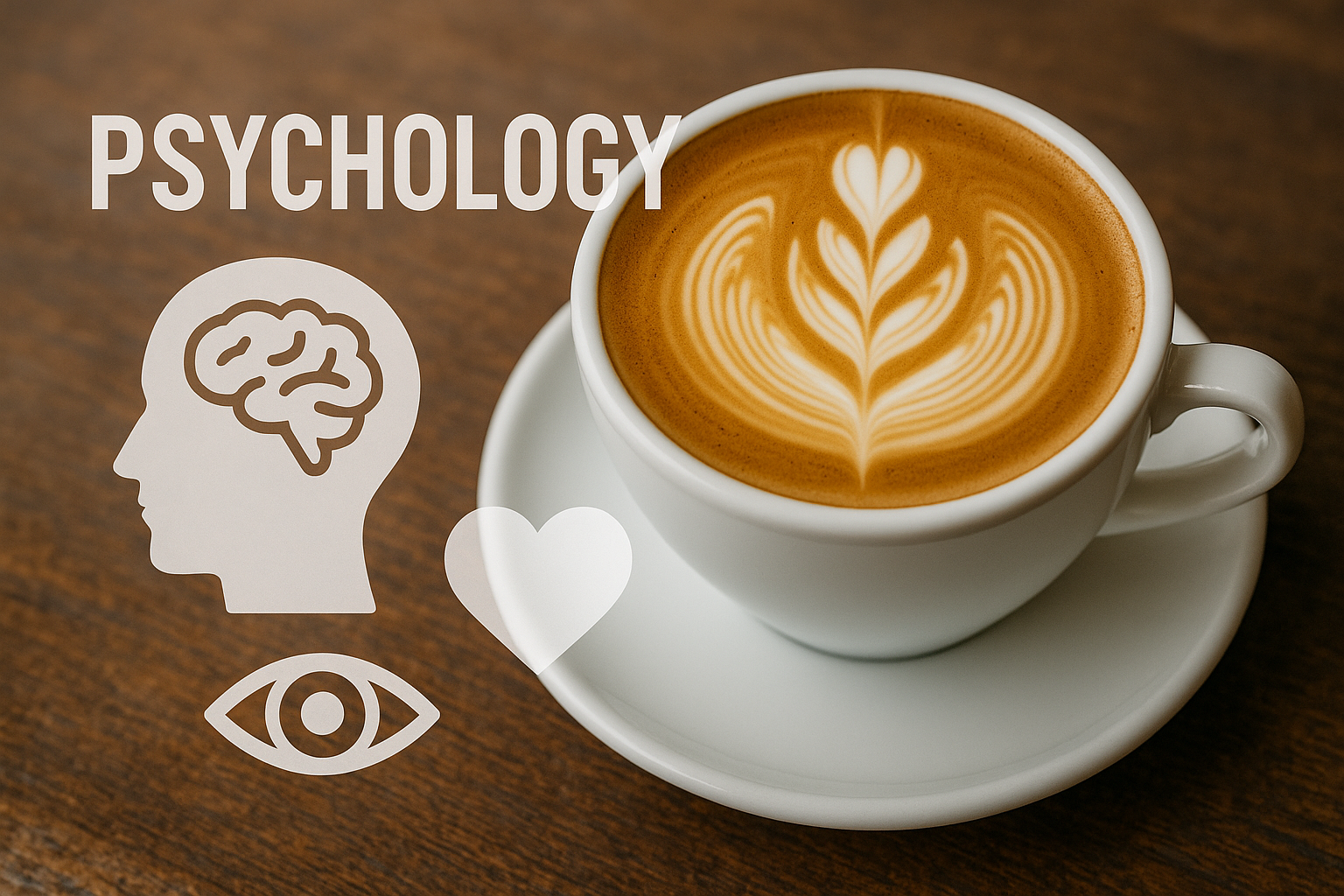Latte art has become more than just a flourish on the surface of your morning cappuccino.
In modern specialty cafés, it’s a symbol of quality, skill, and care. But beyond aesthetics, there’s something deeper at play: the psychology of perception.
How much does the appearance of your coffee influence how it tastes? What does the brain register before you even take a sip? And why does a beautifully poured rosetta feel more satisfying than a plain espresso?
In this article, we explore the surprising science behind how visual presentation, especially in the form of latte art, shapes our sensory experiences and influences taste, satisfaction, and even behavior.
Visual Cues and First Impressions
When we see a cup of coffee with a heart, tulip, or swan gracefully poured into the crema, our brain begins to make judgments — often subconsciously.
Psychologists call this “visual priming”. The presentation of food or drink activates expectations about flavor, temperature, texture, and quality.
If the visual presentation is attractive, we’re more likely to perceive the drink as higher quality and even more flavorful.
This isn’t just theory. In a 2013 study published in the journal Flavour, participants were given identical lattes with different levels of latte art.
The ones with well-executed designs were rated significantly better tasting, despite having no actual variation in ingredients or preparation.
How Our Brain Interprets Taste
To understand how visuals influence taste, it helps to know how the brain processes flavor.
Flavor is not just a function of taste buds. It’s a multi-sensory experience that includes:
- Sight
- Smell
- Touch (mouthfeel)
- Sound (the environment)
- Expectation
When you see a visually appealing drink, your brain releases dopamine, the reward chemical. This heightens anticipation and primes the brain to interpret neutral or subtle flavors as more pleasing.
The color and symmetry of the art can even affect perceived sweetness, acidity, or bitterness — a phenomenon well documented in culinary psychology.
Color, Contrast, and Cognitive Bias
Latte art isn’t just about patterns — color contrast plays a big role in perception.
A clean, golden-brown crema topped with white milk foam creates contrast that suggests freshness and proper technique. This signals to the brain that the coffee was prepared with care, prompting a more positive response.
Cognitive bias also kicks in. If we believe a drink is expertly made (based on appearance), we are more likely to rate it higher in taste and texture — this is known as the “halo effect.”
The Role of Symmetry and Pattern Recognition
Humans are naturally drawn to symmetry. Studies show that symmetrical patterns are not only aesthetically pleasing but also perceived as more organized and higher quality.
In latte art, symmetrical designs like hearts or tulips suggest balance and precision, which translate to assumptions about the coffee’s preparation. Our brain associates these patterns with structure, leading us to believe the drink itself is more harmonious in flavor.
Even complex, free-pour designs can generate subconscious admiration. When we perceive that effort and mastery went into creating something beautiful, our enjoyment increases — even if we don’t realize it.
Expectations and the Experience Economy
Today’s consumers — especially millennials and Gen Z — seek more than products; they crave experiences. The visual appeal of a latte, often captured and shared on social media, adds a layer of storytelling and social value.
When a customer receives a drink with impressive latte art, their brain registers that moment as special. This increases emotional attachment to the café, and by extension, the perceived taste of the coffee itself.
Expectation fuels reality. If a barista hands over a carefully crafted design, the customer’s expectations for flavor rise — and often, so does satisfaction.
Cultural Influences and Visual Psychology
Different cultures interpret colors and symbols in unique ways, which can affect how latte art is perceived.
For instance:
- In Western cultures, hearts often symbolize warmth and care, enhancing emotional response.
- In East Asian cultures, minimalism and symmetry are deeply respected, leading to a stronger appreciation for clean, simple latte art.
- Bright colors or extravagant designs may appeal more to younger demographics or urban audiences who value creativity and novelty.
Understanding these nuances allows baristas to tailor art to their clientele, deepening the emotional resonance of each drink.
The Connection Between Beauty and Trust
Latte art isn’t just about aesthetics — it communicates skill. When a customer sees a beautiful design, they assume the barista is experienced and that the drink is made properly.
This builds trust, which is essential in hospitality. A customer who trusts the barista is more likely to enjoy their drink, return to the café, and recommend it to others.
In essence, latte art becomes a visual guarantee of quality.
Emotional Response and Taste Memory
Visuals play a powerful role in memory. When an experience is visually striking, it’s more likely to be remembered — and remembered fondly.
This matters in coffee because taste memory is a major part of brand loyalty. If a customer associates your café with stunning latte art, that image stays with them. It may even override a mediocre experience, creating a more favorable memory overall.
Emotions tied to visual experiences help embed that memory deeper. In fact, studies show that people remember 80% of what they see, compared to just 20% of what they read and 10% of what they hear.
Why Poor Latte Art Can Hurt Perception
On the flip side, sloppy or inconsistent latte art can detract from a customer’s experience. Even if the drink is well-made, a poorly presented cup can cause doubt.
This “visual dissonance” creates confusion in the brain. When what we see doesn’t match what we expect, our brain responds with skepticism, which can dampen taste perception.
In customer service, perception often is reality. That’s why training in latte art is more than a creative skill — it’s a strategic business advantage.
Can Latte Art Actually Improve Taste?
While latte art doesn’t physically change the flavor, it alters how we interpret that flavor.
A beautiful drink activates reward centers in the brain, sets positive expectations, and enhances mood — all of which amplify the sensory experience of taste.
This is why the best specialty cafés treat latte art as an essential part of the service, not just an optional flourish.

Artur is a coffee enthusiast and content creator passionate about barista techniques and coffee culture. With a sharp eye for detail and a love for learning, he shares practical tips, brewing guides, and gear insights to help readers elevate their coffee experience — from home brewers to aspiring professionals.
